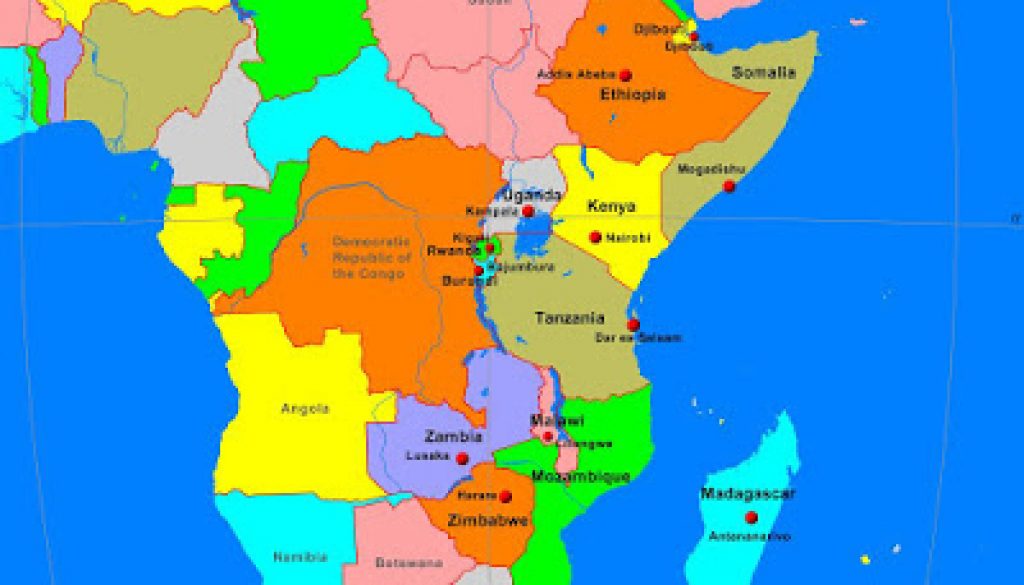East Africa leads in economic growth
East Africa the region on the continent
with the strongest economic growth is propelled by economic
diversification and investments.
with the strongest economic growth is propelled by economic
diversification and investments.
The Institute of Chartered Accountants in
England and Wales made a forecast saying the region would record 6.3
per cent growth in 2018.
England and Wales made a forecast saying the region would record 6.3
per cent growth in 2018.
According to the ‘Economic Insight
report’, released on Wednesday, Ethiopia remains the region’s
powerhouse, with growth forecast at 8.1 percent, and recent reforms
under new Prime Minister Abiy Ahmed.
report’, released on Wednesday, Ethiopia remains the region’s
powerhouse, with growth forecast at 8.1 percent, and recent reforms
under new Prime Minister Abiy Ahmed.
According to the report, Kenya’s strong growth (forecast at 5.4 percent in 2018) results from a services boom.
“While the economies are smaller, growth rates in Tanzania and Rwanda (both 6.7 percent) are extremely impressive.
Perhaps surprisingly Uganda (discussed in
more depth in a dedicated section in the report) receives more
remittance income ($1.4bn in 2017) than Ethiopia ($816m) or South Africa
($837m),” said in Nairobi, ICAEW Regional Director
Michael Armstrong.
more depth in a dedicated section in the report) receives more
remittance income ($1.4bn in 2017) than Ethiopia ($816m) or South Africa
($837m),” said in Nairobi, ICAEW Regional Director
Michael Armstrong.
The report further notes that in North Africa, very strong performances in Libya and Egypt help to drag overall GDP growth up.
In Libya, continued improvements in oil
production after the civil conflict are expected to result in GDP growth
of 16.5 percent this year.
production after the civil conflict are expected to result in GDP growth
of 16.5 percent this year.
In Egypt, structural and policy reforms
have boosted manufacturing and investment while the tourism sector has
continued to recover; GDP growth in 2018 is forecast at 5.3 percent.
have boosted manufacturing and investment while the tourism sector has
continued to recover; GDP growth in 2018 is forecast at 5.3 percent.
These two performances will boost the
region’s growth to 1.8 percent, even if the picture in Morocco, Algeria
and Tunisia is less rosy, noted the accountancy body.
region’s growth to 1.8 percent, even if the picture in Morocco, Algeria
and Tunisia is less rosy, noted the accountancy body.
South Africa accounts for over 60 percent
of the GDP of Southern Africa, so continued slow growth in the regional
heavyweight (forecast at 1.5 percent for 2018) weighs on overall growth
in the region. The report points out that
the forecast 1.5 percent growth in Angola, which accounts for another
18 percent of regional output, and the forecast 1.8 percent contraction
in Zimbabwe will not help.
of the GDP of Southern Africa, so continued slow growth in the regional
heavyweight (forecast at 1.5 percent for 2018) weighs on overall growth
in the region. The report points out that
the forecast 1.5 percent growth in Angola, which accounts for another
18 percent of regional output, and the forecast 1.8 percent contraction
in Zimbabwe will not help.
According to the report, strong growth in Botswana and Zambia will be insufficient to make a difference.
Growth in the franc zone is forecast at
4.6 percent, largely driven by a boost of 7.4 percent in the region’s
biggest economy, Ivory Coast, where investment is driving rapid
expansion, noted the report.
4.6 percent, largely driven by a boost of 7.4 percent in the region’s
biggest economy, Ivory Coast, where investment is driving rapid
expansion, noted the report.




